Field Investigation of Wave Attenuation in a Mangrove Forest Dominated by Avicennia marina (Forsk.) Viern.
Abstract
1. Introduction
2. Results
2.1. Vegetation Traits and Density
2.2. Tidal and Wave Climate
2.3. Attenuation Waves over the Mudflats
2.4. Attenuation of Waves in the Mangroves
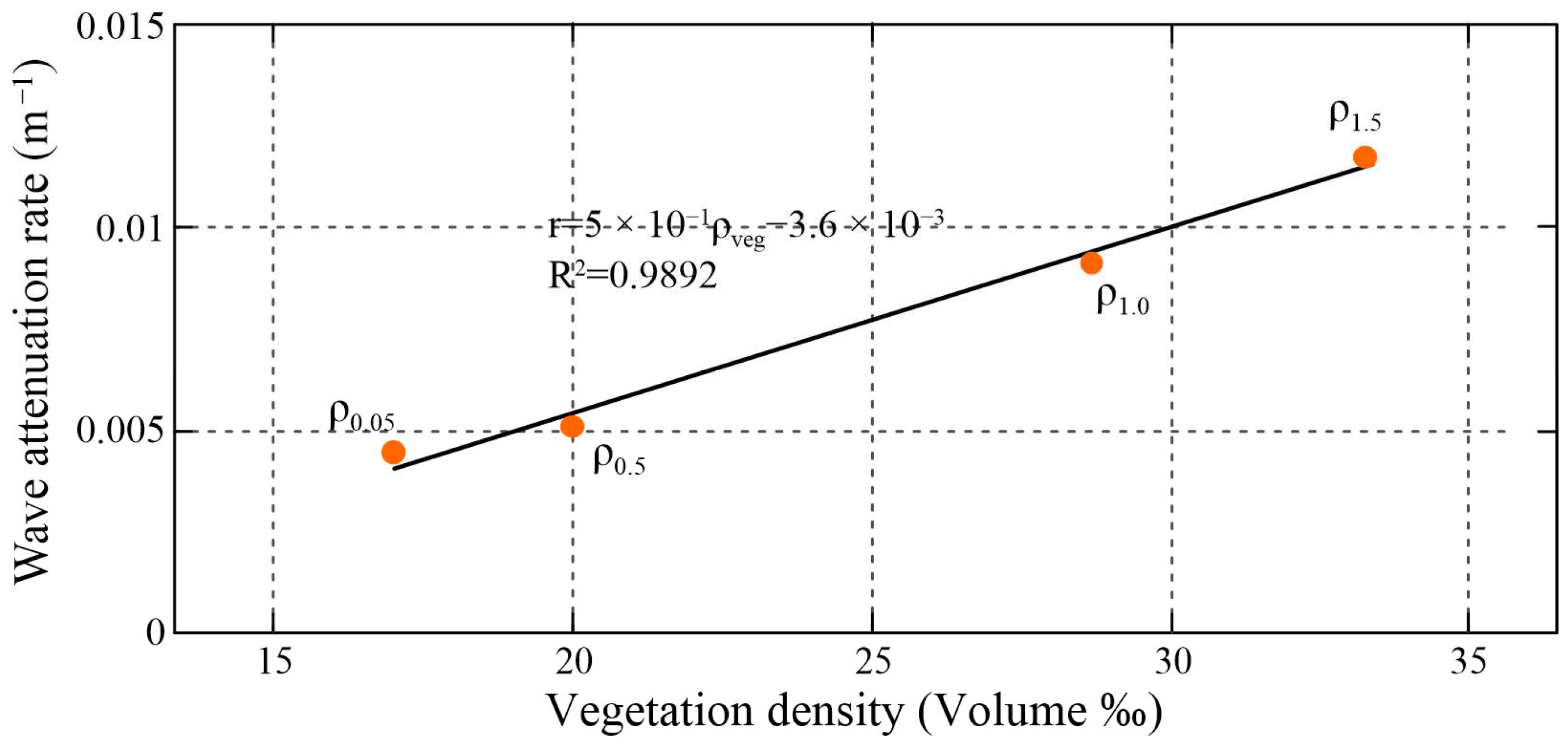
3. Discussion
3.1. Vegetation Features Affecting Wave Propagation in Mangroves
3.2. Physical Processes Affecting Wave Propagation in Mangroves
3.3. Quantifying Bio-Physical Interactions in Mangroves
4. Materials and Methods
4.1. Study Site
4.2. Data Collection
4.3. Data Processing
5. Conclusions
Author Contributions
Funding
Data Availability Statement
Conflicts of Interest
References
- Massel, S.R.; Furukawa, K.; Brinkman, R.M. Surface wave propagation in mangrove forests. Fluid Dyn. Res. 1999, 24, 219–249. [Google Scholar] [CrossRef]
- Mazda, Y.; Magi, M.; Kogo, M.; Hong, P.N. Mangroves as a coastal protection from waves in the Tong King delta, Vietnam. Mangroves Salt Marshes 1997, 1, 127–135. [Google Scholar] [CrossRef]
- Méndez, F.J.; Losada, I.J. Anempirical model to estimate the propagation of random breaking and nonbreaking waves over vegetation fields. Coast. Eng. 2004, 2, 103–118. [Google Scholar] [CrossRef]
- Cao, H.; Chen, Y.; Tian, Y.; Feng, W. Field Investigation into Wave Attenuation in the Mangrove Environment of the South China Sea Coast. J. Coastal Res. 2016, 32, 1417–1427. [Google Scholar] [CrossRef]
- Horstman, E.M.; Dohmen-Janssen, C.M.; Narra, P.M.F.; van den Berga, F.; Siemerink, M.; Hulscher, S.J.M.H. Wave attenuation in mangroves: A quantitative approach to field observations. Coastal Eng. 2014, 94, 47–62. [Google Scholar] [CrossRef]
- Quartel, S.; Kroon, A.; Augustinus, P.G.E.F.; van Santen, P.; Tri, N.H. Wave attenuation in coastal mangroves in the Red River Delta, Vietnam. J. Asian Earth Sci. 2007, 29, 576–584. [Google Scholar] [CrossRef]
- Zhou, X.; Dai, Z.; Pang, W.; Wang, J.; Long, C. Wave attenuation over mangroves in the Nanliu Delta, China. Front. Mar. Sci. 2022, 9, 874818. [Google Scholar] [CrossRef]
- Hashim, A.M.; Catherine, S.M.P. A laboratory study on wave reduction by mangrove forests. APCBEE Procedia 2013, 5, 27–32. [Google Scholar] [CrossRef]
- Husrin, S.; Strusinska, A.; Oumeraci, H. Experimental study on tsunami attenuation by mangrove forest. Earth Planets Space 2012, 64, 973–989. [Google Scholar] [CrossRef]
- Maza, M.; Lara, J.L.; Losada, I.J. Experimental analysis of wave attenuation and drag forces in a realistic fringe Rhizophora mangrove forest. Adv. Water Resour. 2019, 131, 103376. [Google Scholar] [CrossRef]
- Wang, Y.; Yin, Z.; Liu, Y. Laboratory study on the drag coefficient for mangrove forests in regular waves. Ocean Eng. 2022, 255, 111522. [Google Scholar] [CrossRef]
- Cuc, N.T.K.; Suzuki, T.; de Ruyter van Steveninck, E.D.; Hai, H. Modelling the impacts of mangrove vegetation structure on wave dissipation in Ben Tre Province, Vietnam, under different climate change scenarios. J. Coastal Res. 2015, 31, 340–347. [Google Scholar] [CrossRef]
- Magdalena, I.; Kusnowo, V.; Azis, I.M.; Widowati. 1D-2D Numerical Model for Wave Attenuation by Mangroves as a Porous Structure. Computation 2021, 9, 66. [Google Scholar] [CrossRef]
- Phan, K.L.; Stive, M.J.F.; Zijlema, M.; Truong, H.S.; Araninkhof, S.G.J. The effects of wave non-linearity on wave attenuation by vegetation. Coast. Eng. 2019, 147, 63–74. [Google Scholar] [CrossRef]
- Zhang, Y.; Yang, Y.; Yang, K.; Tan, X.; Sun, X.; Leng, B.; Zhou, C.; Zhu, B. Non-linear wave attenuation quantification model improves the estimation of wave attenuation efficiency of mangroves. Estuar. Coast. Shelf Sci. 2020, 245, 106927. [Google Scholar] [CrossRef]
- FAO (Food and Agricultural Organization). The World’s Mangroves 1980-2005 (No. 153 FAO Forestry Paper); FAO: Rome, Italy, 2007. [Google Scholar]
- Giri, C.; Ochieng, E.; Tieszen, L.L.; Zhu, Z.; Singh, A.; Loveland, T.; Masek, J.; Duke, N. Status and distribution of mangrove forests of the world using earth observation satellite data. Glob. Ecol. Biogeogr. 2011, 20, 154–159. [Google Scholar] [CrossRef]
- Spalding, M.; Kainuma, M.; Collins, L. World Atlas of Mangroves; Earthscan: London, UK, 2010. [Google Scholar]
- Borsje, B.W.; van Wesenbeeck, B.K.; Dekker, F.; Paalvast, P.; Bouma, T.J.; van Katwijk, M.M.; de Vries, M.B. How ecological engineering can serve in coastal protection. Ecol. Eng. 2011, 37, 113–122. [Google Scholar] [CrossRef]
- Blankespoor, B.; Dasgupta, S.; Lange, G.-M. Mangroves as a protection from storm surges in a changing climate. Ambio 2017, 46, 478–491. [Google Scholar] [CrossRef] [PubMed]
- Masson-Delmotte, V.; Zhai, P.; Pirani, A.; Connors, S.L.; Péan, C.; Berger, S.; Caud, N.; Chen, Y.; Goldfarb, L.; Gomis, M.I. Climate Change 2021: The Physical Science Basis, Contribution of Working Group I to the Sixth Assessment Report of the Intergovernmental Panel on Climate Change; IPCC: Geneva, Switzerland, 2021. [Google Scholar]
- Dalrymple, R.A.; Kirby, J.T.; Hwang, P.A. Wave diffraction due to areas of energy dissipation. J. Waterw. Port Coast. Ocean Eng. 1984, 110, 67–79. [Google Scholar] [CrossRef]
- Ozeren, Y.; Wren, D.G.; Wu, W. Experimental Investigation of Wave Attenuation Through Model and Live Vegetation. J. Waterw. Port Coast. Ocean Eng. 2014, 140, 04014019. [Google Scholar] [CrossRef]
- Best, Ü.S.N.; van der Wegen, M.; Dijkstra, J.; Reyns, J.; van Prooijen, B.C.; Roelvink, D. Wave attenuation potential, sediment properties and mangrove growth dynamics data over Guyana’s intertidal mudflats: Assessing the potential of mangrove restoration works. Earth Syst. Sci. Data 2022, 14, 2445–2462. [Google Scholar] [CrossRef]
- Quynh, V.V. Effects on wave break, sea dike protection of the tree planting formula in the coastal salinity inundated areas. In Proceedings of the Workshop on the Effect of Vegetation on Dike Design, Ho Chi Minh City, Vietnam, 3–6 November 2010. [Google Scholar]
- Wolanski, E.; Mazda, Y.; Furukawa, K.; Ridd, P.; Kitheka, J.; Spagnol, S.; Stieglitz, T. Water circulation in mangroves, and its implications for biodiversity. In Oceanographic Processes of Coral Reefs; Wolanski, E., Ed.; CRC Press: London, UK, 2001; pp. 53–76. [Google Scholar]
- Mazda, Y.; Magi, M.; Ikeda, Y.; Kurokawa, T.; Asano, T. Wave reduction in a mangrove forest dominated by Sonneratia sp. Wetlands Ecol. Manag. 2006, 14, 365–378. [Google Scholar] [CrossRef]
- Battjes, J.A.; Stive, M.J.F. Calibration and verification of a dissipation model for random breaking waves. J. Geophys. Res. Ocean. 1985, 90, 9159–9167. [Google Scholar] [CrossRef]
- Brinkman, R.M. Wave Attenuation in Mangrove Forests: An Investigation Through Field and Theoretical Studies. Ph.D. Thesis, James Cook University, Townsville, Australia, 2006. [Google Scholar]
- Myrhaug, D.; Holmedal, L.E.; Ong, M.C. Nonlinear random wave-induced drag force on a vegetation field. Coast. Eng. 2009, 56, 371–376. [Google Scholar] [CrossRef]
- Méndez, F.J.; Losada, I.J.; Losada, M.A. Hydrodynamics induced by wind waves in a vegetation field. J. Geophys. Res. Ocean. 1999, 104, 18383–18396. [Google Scholar] [CrossRef]
- Gratiot, N.; Bildstein, A.; Anh, T.T.; Thoss, H.; Denis, H.; Michallet, H.; Apel, H. Sediment flocculation in the Mekong River estuary, Vietnam, an important driver of geomorphological changes. C. R. Geosci. 2017, 349, 260–268. [Google Scholar] [CrossRef]
- Van Rijn, L.C. Principles of Fluid Flow and Surface Waves in Rivers, Estuaries, Seas and Oceans; Aqua Publications: Amsterdam, The Netherlands, 2008. [Google Scholar]
- Zhang, Y.; Li, G. Analysis of port construction conditions in the Leizhou Bay. Ocean Eng. 2013, 32, 11–19. (In Chinese) [Google Scholar]
- Zhao, C. Hydrographic and sediment analysis of Zhanjiang Bay. J. Waterw. Harb. 1999, 4, 16–21. [Google Scholar]
- Hegge, B.J.; Masselink, G. Spectral analysis of geomorphic time series: Auto-spectrum. Earth Surf. Process. Landf. 1996, 21, 1021–1040. [Google Scholar] [CrossRef]
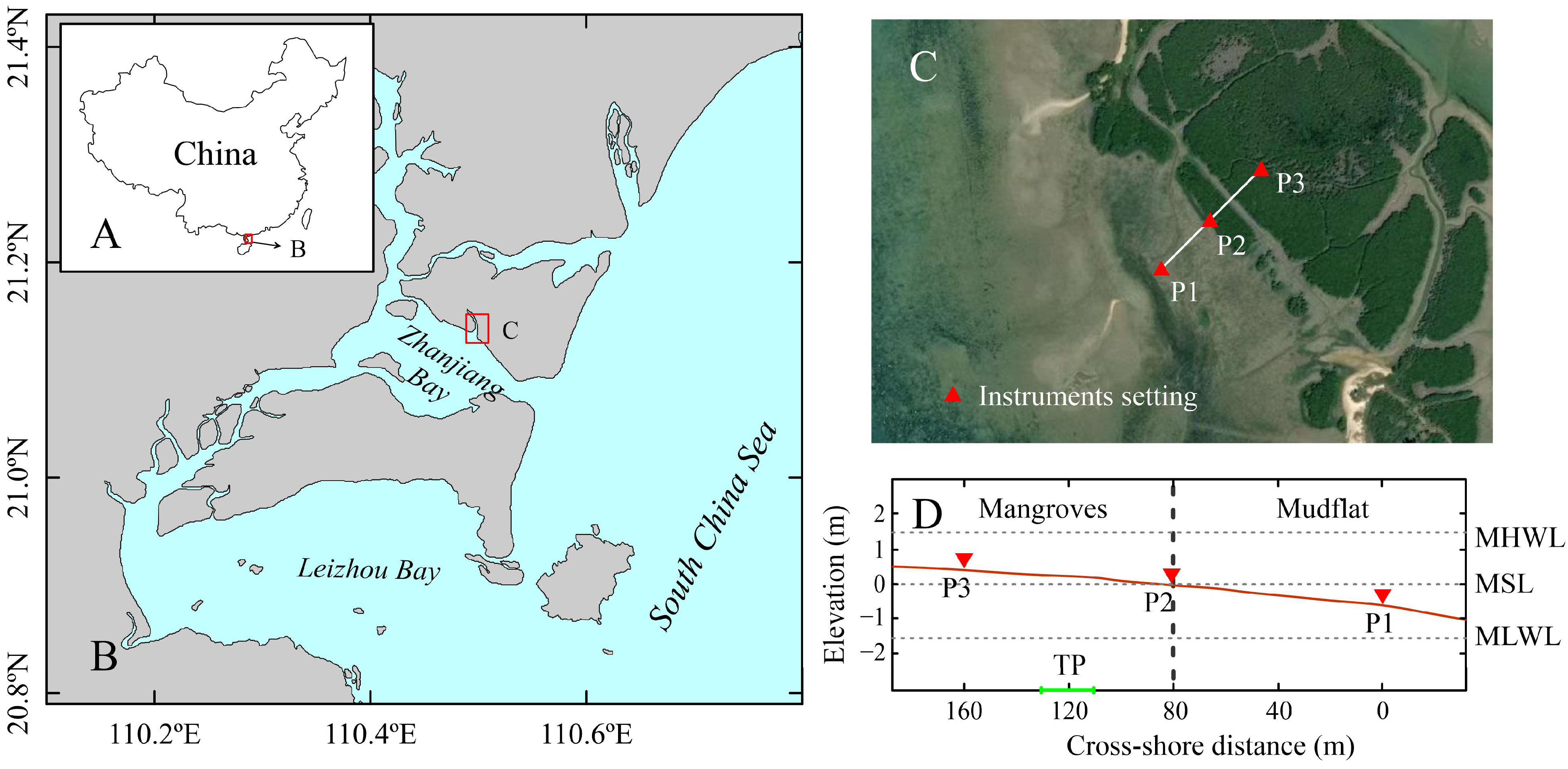
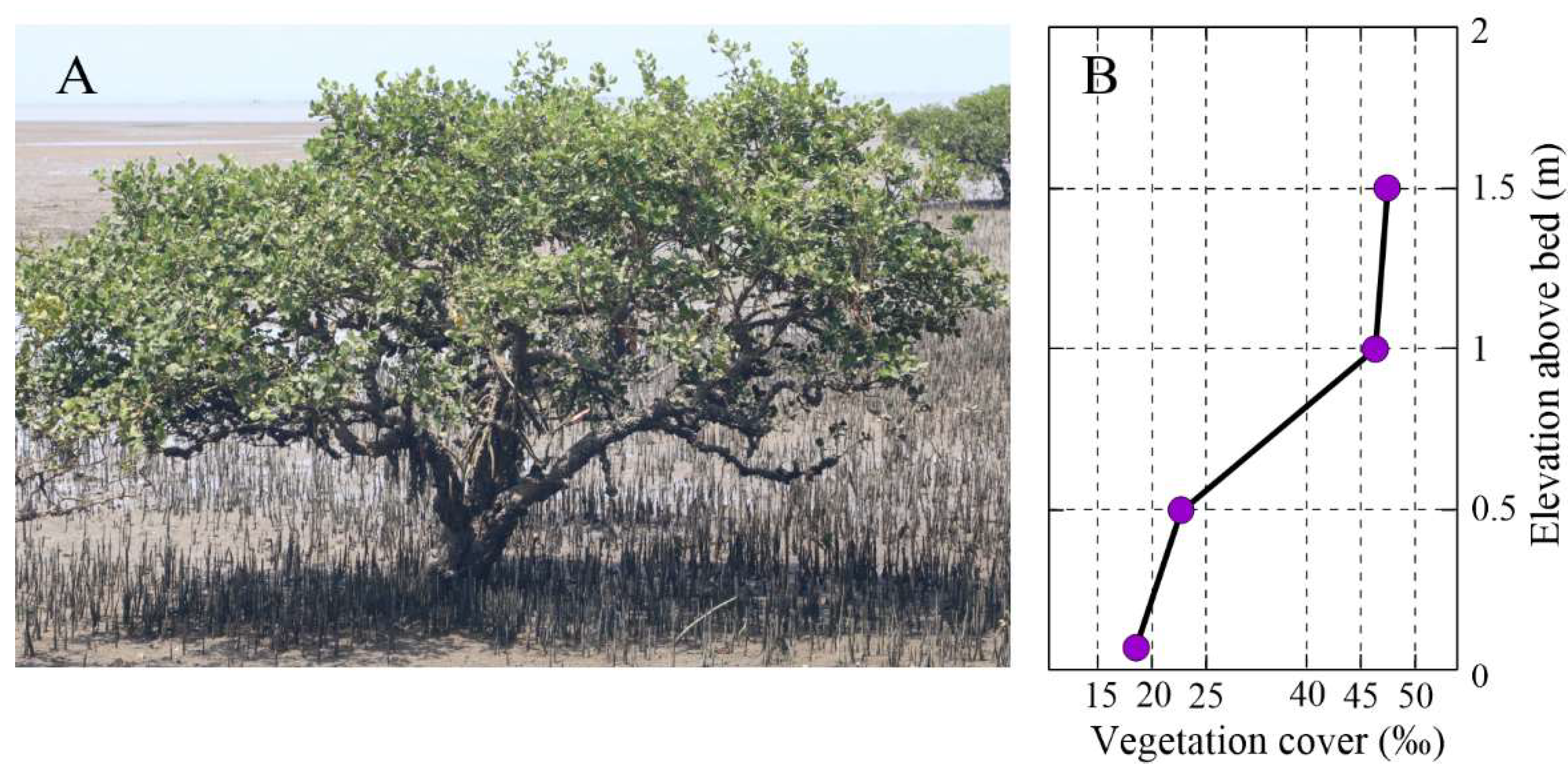
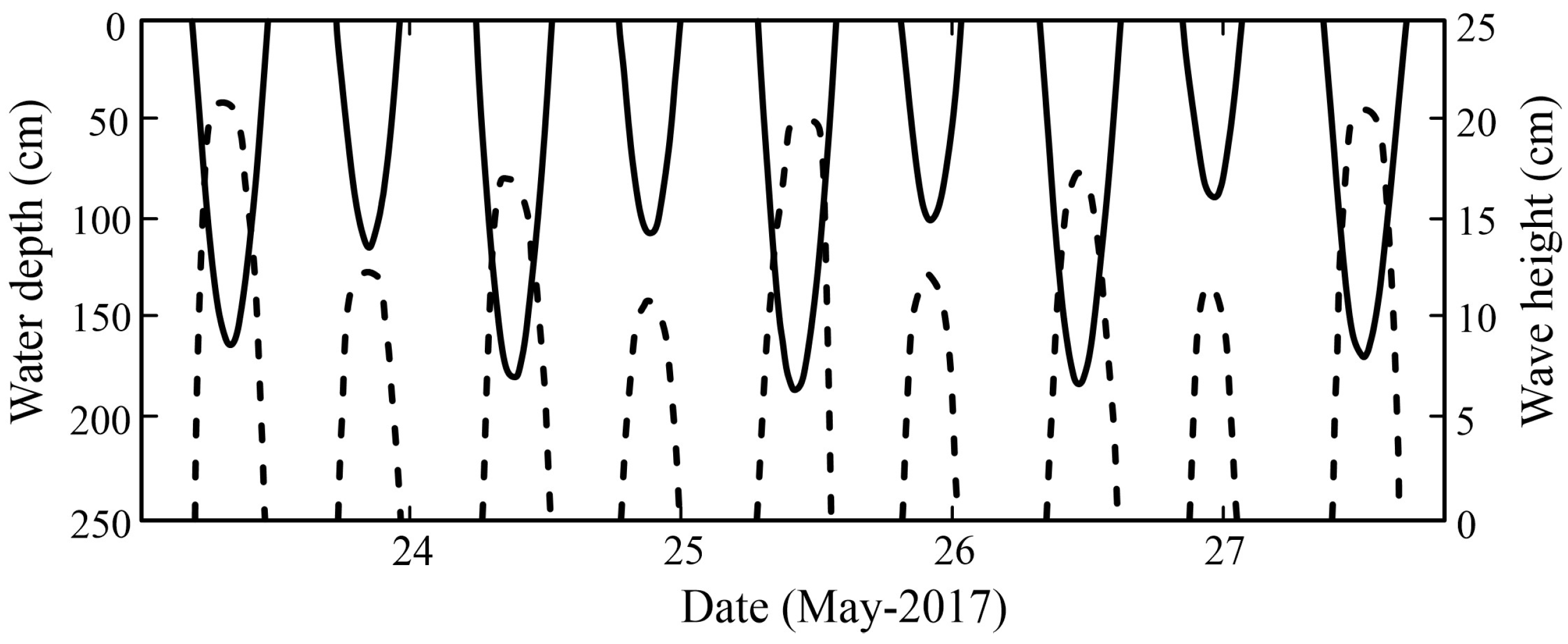



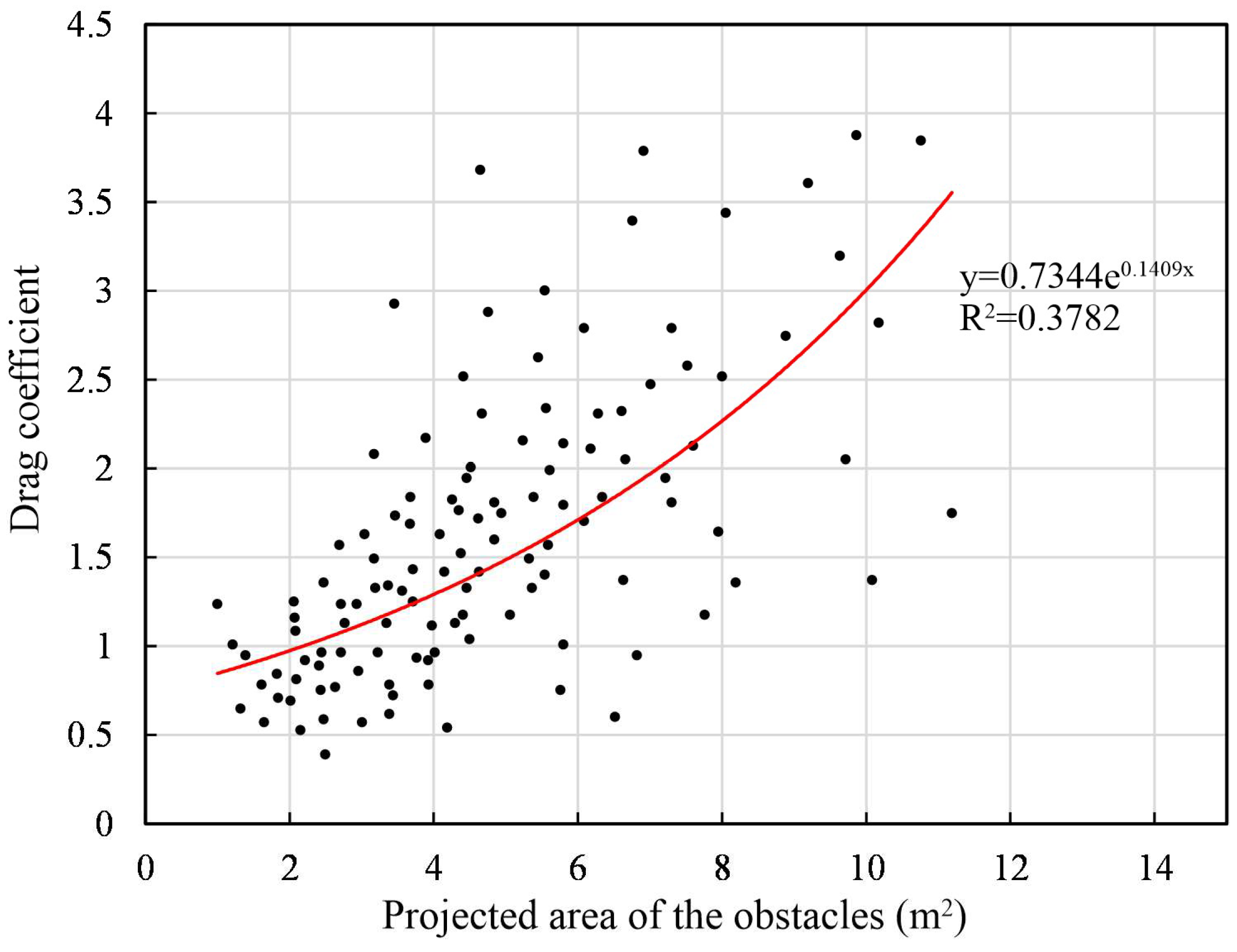
Disclaimer/Publisher’s Note: The statements, opinions and data contained in all publications are solely those of the individual author(s) and contributor(s) and not of MDPI and/or the editor(s). MDPI and/or the editor(s) disclaim responsibility for any injury to people or property resulting from any ideas, methods, instructions or products referred to in the content. |
© 2025 by the authors. Licensee MDPI, Basel, Switzerland. This article is an open access article distributed under the terms and conditions of the Creative Commons Attribution (CC BY) license (https://creativecommons.org/licenses/by/4.0/).
Share and Cite
Wei, X.; Mo, W.; Xiong, L.; Hu, X.; Cheng, H. Field Investigation of Wave Attenuation in a Mangrove Forest Dominated by Avicennia marina (Forsk.) Viern. Plants 2025, 14, 135. https://doi.org/10.3390/plants14010135
Wei X, Mo W, Xiong L, Hu X, Cheng H. Field Investigation of Wave Attenuation in a Mangrove Forest Dominated by Avicennia marina (Forsk.) Viern. Plants. 2025; 14(1):135. https://doi.org/10.3390/plants14010135
Chicago/Turabian StyleWei, Xing, Wenyuan Mo, Lanlan Xiong, Xin Hu, and Hao Cheng. 2025. "Field Investigation of Wave Attenuation in a Mangrove Forest Dominated by Avicennia marina (Forsk.) Viern." Plants 14, no. 1: 135. https://doi.org/10.3390/plants14010135
APA StyleWei, X., Mo, W., Xiong, L., Hu, X., & Cheng, H. (2025). Field Investigation of Wave Attenuation in a Mangrove Forest Dominated by Avicennia marina (Forsk.) Viern. Plants, 14(1), 135. https://doi.org/10.3390/plants14010135






